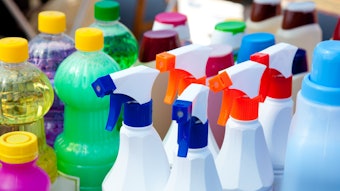During the Fragrance Materials Association’s (FMA) fall workshop on green fragrances, there was a general agreement among the presenters that consumer demand for all things green—both strictly and loosely defined—is booming. It was in discussing the implications of this demand that dissonance among stakeholders—consumers, NGOs and industry—took shape.
The Boom
When it comes to natural, green and sustainability, consumers have been faced with vague and competing marketing claims. A Yakkelovich study cited by Daniel Fabricant, vice president of scientific and regulatory affairs for the Natural Products Association (NPA), reports that 78% of American women believe natural personal care is currently regulated or don’t know if it is. Ninety-seven percent think it should be. Meanwhile, two-thirds of American women believe a personal care product labeled natural should contain, at a minimum, 95% natural ingredients. In this context, Hee Jeong Son, corporate vice president of marketing, Belmay, outlined the rise of all things green in the fragrance and personal care industry.
Formulation, she noted, is a key hurdle. "It’s a big challenge for the fragrance industry because from a creativity point of view perfumers are limited as to the palette of ingredients they can use. Just because they’re organic doesn’t mitigate them from regular safety [requirements]. In terms of quality, because they’re unaltered, they change from batch to batch so [sometimes] we have to ask our clients to buy entire stocks of an ingredient to make sure it will remain the same within their products."
Claims
"About 10 years ago we saw a lot of products coming out of California claiming to have 70% or 72% organic [content]," said Son. The hurdles for these organic pioneers included the limited availability of organic raw materials, budget constraints and prohibitive price points for customers. "They wanted to be green, but they didn’t have the funds and resources to do that. If you look at today’s products, they’re pushing the boundaries [to] 96% organic."
Fragrance manufacturers and suppliers have responded to the overall green boom by providing clients with essential oils, organic materials and even nature-identical fragrances in the support of marketing strategies, Son explained. Companies are boosting their natural collections. They have also established organic certification for manufacturing sites, launched US Department of Agriculture (USDA)-accredited green fragrances and created partnerships to distribute all-plant essences certified by the USDA.
Despite these efforts confusion reigns, continued Son. In the absence of all-encompassing green and sustainability standards and the rise of disjointed self-labeling efforts, the consumer is left without confidence. "[Products will] say ‘we’re 100%,’ but they don’t really say 100% of what. Others say ‘made with organics,’ but if you read the labels, they’re made with three organic ingredients—everything else is not."
Son noted that US consumers have become accustomed to seeing the USDA organic labeling in their food shopping, so it is no wonder that many would like to see this standard reflected in their beauty products. "More and more manufacturers at the premium levels—because they can command the price—are pushing the boundaries to have 95% or 100% organic products." Son cited the recent launch of hair and beauty products bearing USDA seals.
Son concluded that the fragrance industry should be aware of consumer motivations behind the quest for "green" products. In the beginning, she said, "It was more about ‘I’m afraid of putting bad chemicals on my body, therefore I’m going to use organic.’ Marketers and consumers have since both become savvier. They look not only at what’s inside the product, but what’s outside the product." To this end, she said, packaging claims have expanded to include production in carbon-neutral facilities and donations to green charities. "Consumers are challenged with ‘how green can I be?’" she explained. "Until we get a standard of what the ‘best green’ is, I think manufacturers will continue to [pursue] different seals, different accreditations with their products."
Pursuing a Label vs. Defending Safe Materials
Last month, P&F magazine detailed the NPA’s natural labeling standard ("Defining ‘Natural,’" page 44, December 2008), and speaking before the FMA audience, Fabricant discussed the implications for the fragrance industry.
"Why do we build a standard now?" he asked. To begin, said Fabricant, of all the "green" claims, natural is the most popular. In that light, the NPA perceived a need to give the term meaning. For instance, said Fabricant, free trade and product lifecycle are not being sufficiently addressed by existing natural and organic personal care standards. (See NPA Standards.)
He showed figures that natural/organic personal care has grown in recent years from 4% to 10% of the market. The growth, Fabricant said, stemmed from ecological concerns and vague fears of synthetics. Performance remains the bottom line, of course, but if price and performance are generally equal between a natural and conventional product, consumers will tend to chose natural. In this atmosphere, Fabricant continued, there is ample pseudo-natural positioning.
"We’re looking to sunset out synthetic fragrance [from our standard]," he noted. "The concept of natural and organic fragrance is one that there’s much debate on. At the same time there are companies that are developing products and standards to that end. We’re hoping that the more and more products get certified, the demand for truly natural products will cause a shift in the supply chain for more natural and organic alternatives." Fabricant’s position was that chemistry has improved to the point that high-quality and efficacious natural personal care is possible. "Consumers will pay more," he said. While acknowledging the NPA natural label is not a health or safety claim, it will serve as a guide for consumers seeking natural.
During a Q&A session, Fabricant was asked why the NPA standard was the one the industry should follow. The blunt answer was, "It’s the only one out there."
Meanwhile, Dan Salvito of the Research Institute for Fragrance Materials presented the industry’s science-based point of view. "The argument maybe isn’t so much with the [NPA] certification," he said. "It’s the fact that many of us [in the industry] have been living with this for a long time—natural versus synthetic. And natural isn’t necessarily safer. … From the consumer’s standpoint, the emphasis on natural [implies] ‘this is a safe product for me to use.’ I think that for those of us that are chemists, we feel strongly about the fact that synthetics are not necessarily [less safe]."
"But that perception is not going to change by chemistry alone," Fabricant responded, highlighting the continuing gap between industry knowledge and public perception.
Salvito explained that companies are free to pursue the blessing of various NGO labeling initiatives, but that this sort of action can send the wrong message, a message that cannot be unsent. "I don’t think that by using these [natural] claims that we are using the safest possible chemicals," he said in discussing calls for "safer" fragrances. "I think it’s within the context of the product use."
"It’s what consumers want right now," Fabricant had noted earlier, responding to skeptical questions about the NPA’s certification plan. "They want to know the difference in the marketplace. They want information."
But it doesn’t define what’s "good," a questioner noted.
"No," Fabricant conceded. "This is what consumers define as good. This is what they believe in."
Salvito’s talk covered the fragrance industry’s risk-based approach to fragrance ingredients—including assessment of effects on the aquatic environment—in the hopes that these considerations would be taken into account by those developing natural and organic standards and eco labels. "When we eliminate risk assessment, we’re inferring that there’s no safe use level for chemicals either from an environmental or human health standpoint. I would disagree with that. It also implies that substitution is the solution. Many of us may have faced this. But not everything is substitutable. Or a substitute may not be as efficacious or [may] present different problems that will change the risk of the material. I think we need to consider, too, the socioeconomic impact. … There are economic impacts for substitution."
"For example, we want to use the ‘safest,’ lowest-risk material. But we’ve changed the efficacy of the product. So now we have something that’s maybe half as toxic as the traditional chemical, but now you have to use three times the amount. So risk assessment does become important because we’ve changed the risk to the environment or the risk to the consumer by using the lowest-hazard material as an almost knee-jerk response."










